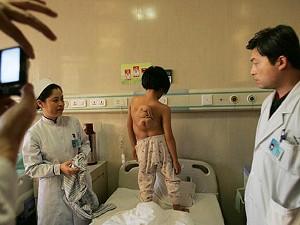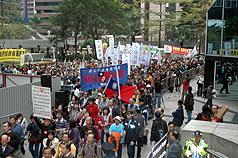Hong Kong—According to the Hong Kong based Information Center for Human Rights & Democracy (ICHRD), a large-scale clash transpired in July between police and villagers in Wanyuandian town, Liaoning province, China. Forty villagers and ten policemen were injured in the incident. The clash happened nearly one month ago, but authorities banned the media from reporting it.
The incident took place on July 13, and the conflict was triggered by the local government’s embezzlement of compensation funds that Wanyuandian Iron Ore, a local enterprise, provided to villagers for occupying their farmland to build roads.
The villagers surrounded the offices of the Wanyuandian government on July 12 and clashed with police. The authorities immediately mobilized 200 policemen from nearby Lingyuan City. Meanwhile more villagers in Wanyuandian assembled at the offices. The total number of villagers was estimated to be about 2,000. Forty villagers were severely injured and required emergency treatment at the local hospital.
The ICHRD reported that the incident was labeled by Liaoning province as a “Special Significant Group Incident (first level),” and reported it to the Central Commission of Politics and Law. The Party Secretary and Mayor of Wanyuandian have been detained according to the Party’s disciplinary regulations.
The ICHRD said that the Chinese State Council and the CCP Central Committee Office have notified all local governments regarding the “Emergent regulation for Large-scaled Group Incidents in China”. However the contents of this document have not been made public.
The ICHRD quoted inside sources as stating that the regulation does not allow the media to report group incidents. It divides group incidents into three levels: the first level is “Special Significant Group Incident” for more than 5,000 participants or greater than 30 people injured; the second level is “Significant Group Incident” where the number of members exceeds 1,000 or more than 10 people are injured; the third level is “Big group incident” with more than 200 participants and more than 10 injured.
The document also requests the National Security department to pay close attention to whether there are so-called foreign “hostile influences” conspired to generate propaganda and take advantage of group incidents.


